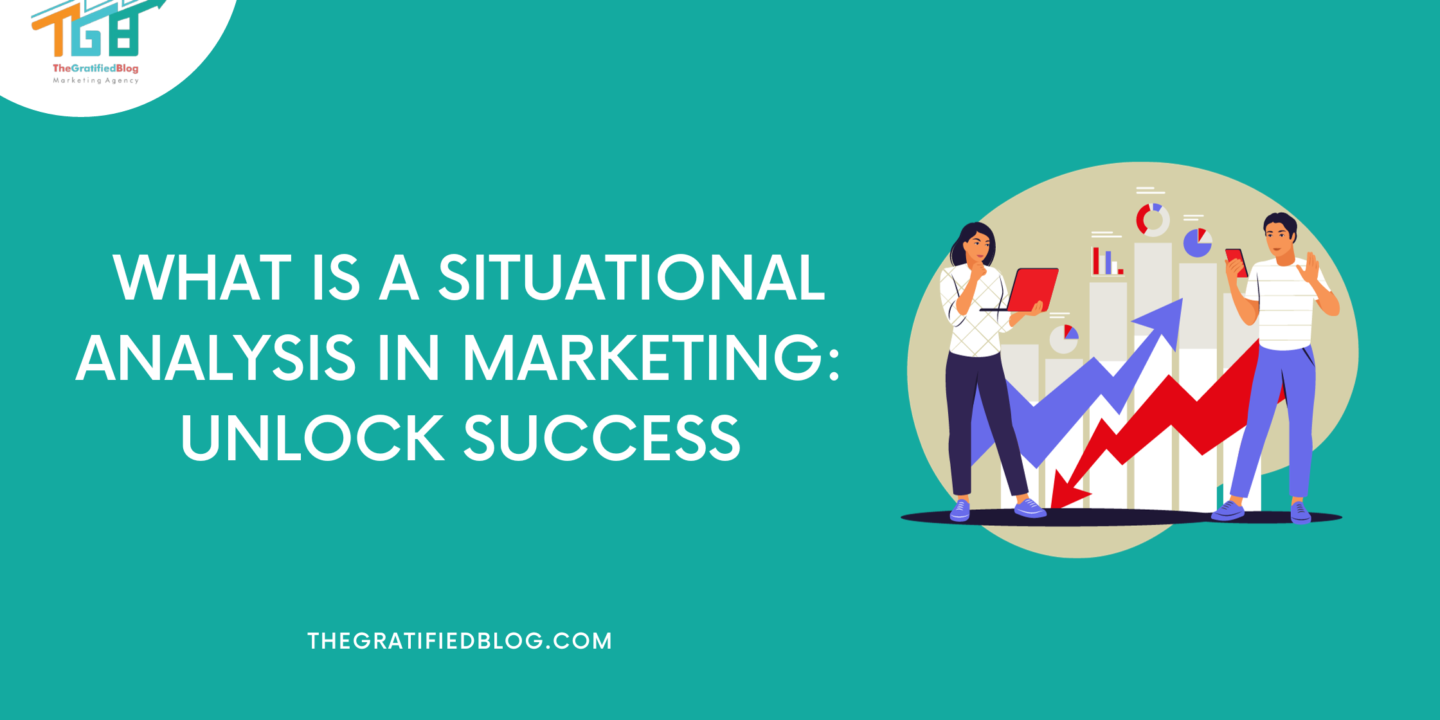
“What is a situational analysis in marketing?” This question is at the heart of every successful marketing strategy. In the fast-paced and ever-evolving business world, understanding the landscape in which you operate is the cornerstone of effective decision-making. It’s like setting out on a journey – you wouldn’t embark without a map, and in marketing, a situational analysis is your map to navigate the complex terrain.
This blog intends to explore and clarify the concept of situational analysis in marketing, shedding light on how this strategic tool empowers businesses to thrive in the competitive marketplace.
So, fasten your seatbelts as we embark on a journey of discovery to answer the fundamental question: What is a situational analysis in marketing, and why is it so vital?
So, let’s get started:
What Is A Situational Analysis In Marketing?
A situational analysis in marketing is a systematic method marketers use to thoroughly examine the internal and external factors that influence their company. This analysis provides valuable insights into a company’s strengths, weaknesses, opportunities, and threats, helping guide strategic decision-making and ensuring the business is well-prepared to navigate the competitive marketplace.
What Are The Key Components Of Situational Analysis?
To perform a comprehensive situational analysis, marketers should consider the following components:
- Product Analysis: Let’s start with a clear assessment of your current offering, which extends beyond just the physical product. Your “product” encompasses all the ways you meet your customers’ needs, including any additional services you provide. Consider factors such as the quality of your customer service because it significantly influences your product’s situation.
- Competitive Examination: An essential aspect of situational analysis is understanding your competitive landscape. You must consider your competitors to craft an effective marketing strategy and business plan. Analyze where your competitors stand, and consider employing tools like VRIO analysis to pinpoint your long-term competitive advantages.
- Distribution Evaluation: How do you deliver your product or service to customers? That is your distribution situation. Your distribution channels are pivotal in your business success, as they were directly reached. Including distribution in your situational analysis can help you identify ways to improve customer outreach, engagement, and retention.
- Environmental Factors: Surprisingly, environmental factors can have both internal and external implications. Internal ecological factors encompass issues like poor inter-company communication or leadership and organizational structure shifts. On the other hand, external environmental factors are often more extensive, including economic recessions, legal regulations, and external stimuli such as the impact of government-issued stimulus checks.
- Opportunities and Challenges Analysis: As you assess each situation above, you will likely uncover your business’s strengths and weaknesses. From there, you can identify potential opportunities and threats. To formalize and document this process, conducting a SWOT analysis in collaboration with your team is highly recommended.
Having gained an understanding of what a situational analysis in marketing is and the crucial components involved, let’s delve deeper into its significance and the practical steps to perform this analysis effectively.
Why Is Situational Analysis Important In Marketing?
A situational analysis is essential in marketing for several reasons:
- Strategic Planning: A situational analysis is the cornerstone of a company’s strategic planning process. By meticulously assessing internal and external factors, businesses can construct well-informed, actionable plans harmonizing with their objectives and available resources. That, in turn, enhances the likelihood of achieving their strategic goals and staying on a path to success.
- Competitive Edge: Maintaining a competitive edge is paramount in the fiercely competitive business landscape. Understanding your competitors and the ever-evolving dynamics of the market is a prerequisite for this. An adept situational analysis allows you to gain insights into market gaps and emerging customer needs, empowering you to innovate and differentiate your offerings to stay ahead of the competition.
- Adaptation: The business world is in a constant state of flux. Market trends, consumer preferences, and external forces change rapidly. For a company to thrive, it must be agile and responsive. A situational analysis equips businesses with the insights necessary for quick adaptation to these market shifts, Ensuring their ability to stay pertinent and flexible amidst change.
- Resource Allocation: Effective distribution of resources is vital for successful business management. Knowing your strengths and weaknesses, as illuminated by the situational analysis, enables you to allocate resources judiciously. You can focus your investments and efforts on areas where you excel, maximizing your impact while addressing weaknesses more effectively. This strategic allocation optimizes resource utilization.
- Risk Mitigation: Identifying potential threats in advance is a proactive measure to safeguard your business. You can spot external factors that might harm your business through situational analysis and develop robust risk mitigation strategies. This preparation helps minimize the adverse impact of these threats, making your business more resilient and better prepared to weather unforeseen challenges.
Now, let’s explore the practical steps in conducting a situational analysis.
How To Conduct A Situational Analysis?
Let’s break down the process into three straightforward steps:
Data Collection And Analysis
The first crucial step in conducting a situational analysis is gathering data from both internal and external sources. This data encompasses financial reports, market research, customer feedback, industry publications, and more. It serves as the foundation of your analysis, providing the raw material for assessing your company’s current situation.
For internal factors, engage with employees, conduct internal audits, and delve into historical performance data. This step will help you understand your company’s strengths and weaknesses. Maintaining an open and transparent dialogue within your organization is essential to gain valuable insights.
Environmental Assessment And SWOT Analysis
Once you have gathered and analyzed the data, it’s time to identify internal and external factors that can influence your business. Externally, study market trends, competitor behavior, and any regulatory changes that could impact your industry. The PESTEL analysis is a valuable tool to understand these external factors comprehensively.
Internally, create a SWOT matrix. This visual representation combines your findings on strengths, weaknesses, opportunities, and threats. The SWOT analysis crystallizes the key takeaways from your research, making it easier to conceptualize your company’s situation and the surrounding environment. It acts as a guiding compass for the next steps.
Objective Setting, Strategy Development, And Ongoing Monitoring
With a clear understanding of your company’s situation, it’s time to set objectives and develop strategies. These objectives should align with your strengths and opportunities while addressing your weaknesses and mitigating threats. Goals should be clear, achievable, and a roadmap for future endeavors.
Create marketing strategies that maximize your strengths and capitalize on opportunities while addressing weaknesses and mitigating threats. These strategies should be informed by the insights gained through your situational analysis, ensuring they are tailored to your unique circumstances.
Remember, a situational analysis is not a one-time process. The business environment is dynamic, and market conditions change. Regularly monitor the market and your business’s performance, adjusting strategies as needed. This ongoing vigilance and adaptability will help your business stay resilient and responsive to shifts in the market, ensuring its continued success.
Conclusion
Now that you know situational analysis in marketing, there’s no reason to delay. Instead of spending time on arbitrary assessments, consider initiating one today to witness how it can significantly enhance your business prospects and drive growth.
If you still have any questions related to the blog, then feel free to leave them in the comment section. We will be happy to answer you.
Thanks for reading 🙂








No Comments